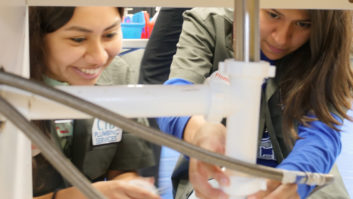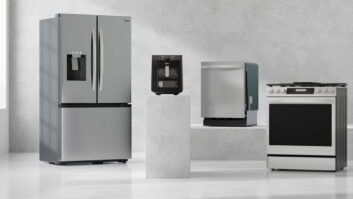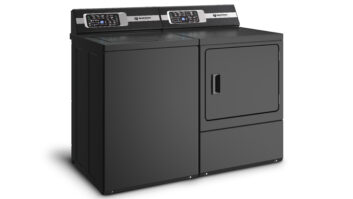As families shelter-in-place, households have become more crowded and busier than ever. This means more cooking and cleaning, which means more wear-and-tear on dishwashers, washing machines, refrigerators, freezers and other major appliances. But with the COVID-19 wariness or the outright fear of inviting strangers into a home, consumers are opting to replace their appliances rather than have them repaired in higher numbers than usual.
According to John Riddle, president & CEO of the 12-store southern California chain Howard’s, traditionally two-thirds of the appliance business has been replacement. But this percentage has lately tilted even more radically away from repair.

“We are seeing people use their appliances much more than ever before,” confirms Scott Bekins, president of the western Michigan Bekins and chair of BrandSource’s Service Committee. “This often reveals existing problems that went unnoticed before, as well as raising consumer dissatisfaction with product performance.”
Initially, consumers may view delivery and repair similarly – a stranger coming into their home – until a retailer lets them know the two scenarios are radically different. (See AHAM’s guest blog “Your Guide to Appliance Repair During COVID-19”)

“Typically, repairs take two trips to fix the product, one to diagnose and at least one other to actually repair,” notes Mark Patterson, VP of the five-store east Tennessee Pattersons Home Appliances, a BrandSource retailer. “Delivery and in-home installations are normally one trip and done. We have also been delivering product to consumers’ front porches or garages and they do the installation themselves.”
For appliance retailers, the biggest problem presented by the pandemic is inventory management. Are consumers desirous for pricier models with new features and better efficiency, or do they simply want to spend as little as possible on a replacement? Can dealers get the inventory they need to meet local consumer needs? How long will this this increased replacement trend last?

Some retailers are reporting an uptick in the sales of smarter appliances, perhaps prompted by who’s at home. “Having high school and college-age kids home, you have sort of a built in IT staff to help mom and dad or grandma and grandpa understand how to use connected appliances,” Riddle reports.
Another replacement constituency is the DIY crowd that “has found a new abundance of free time,” Patterson points out, “meaning they start, continue, or are finishing remodeling the homes they live in and are buying full kitchen suites.” For other retailers serving less well-heeled or less capable consumers suddenly faced with a recession, “if you can stock entry level replacement models, be price competitive, and offer quick delivery, you have the winning combination,” Bekins says.

An appliance dealer’s biggest problem may not be identifying customer replacement needs, but meeting them. Retailers are reporting inventory shortages, with availability of entry-level products on many models stretching out to months. “Keeping track of inventory was critical when our usual turn-around time of two-to-three days for a non-inventory item became weeks and months,” explains Suzanne Carey-Fernandez, owner of Lawrence, MA-based Moderno Appliance & Furniture, a BrandSource retailer. “We pivoted to using our website to clearly mark in-stock items and help customers see what they could get quickly at a time when many basic items were not available.”
Inventory issues may both cause problems and present opportunities, however. “Consumers do not want to wait a week to get a product that they need and use every day,” Patterson insists. “Therefore, it is easy to step consumers up one or two models if you have it in stock or can get it to them in timely manner.”
How long will replacements-over-repair continue to spike? Some retailers believe that even as economies re-open, over-usage of appliances will continue. “As long as the pandemic keeps families at home, there will be increased use of major appliances resulting in a greater need to replace older appliances,” Carey-Fernandez opines.
Other retailers, however, believe the replace/repair balance will soon be restored.
“I believe this current style of appliance purchasing will change almost as rapidly as it began when people go back to work and restaurants are opened again,” Bekins believes. “I think manufacturers feel this way also based on their decisions in many cases to not ramp up production of the products most asked for during this pandemic.”
See also: The Quarantine Effect On Outdoor Living













